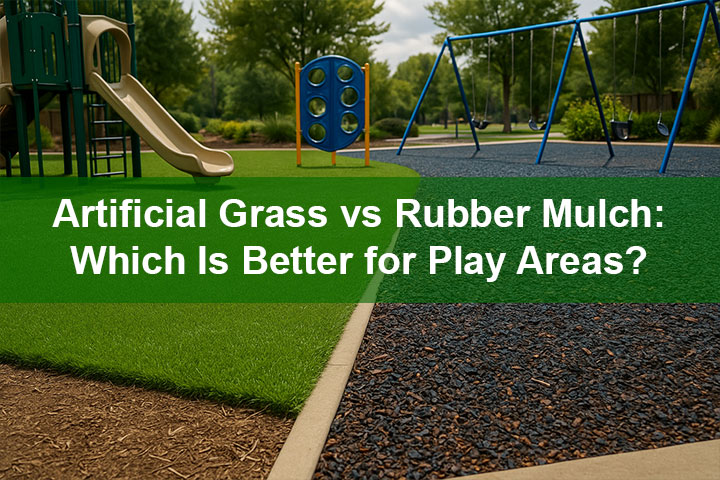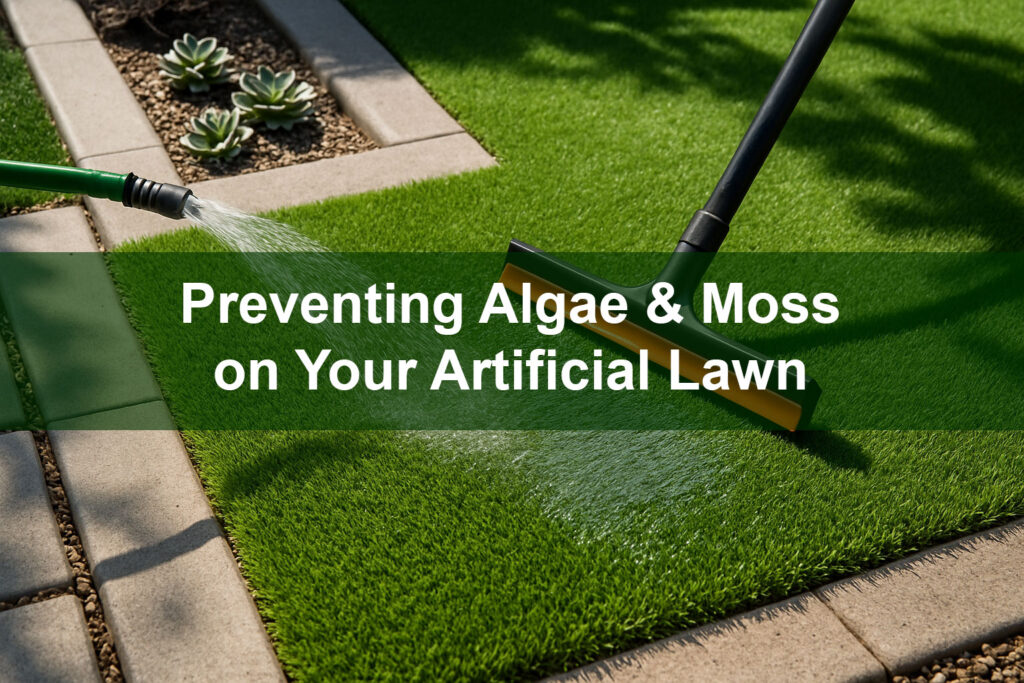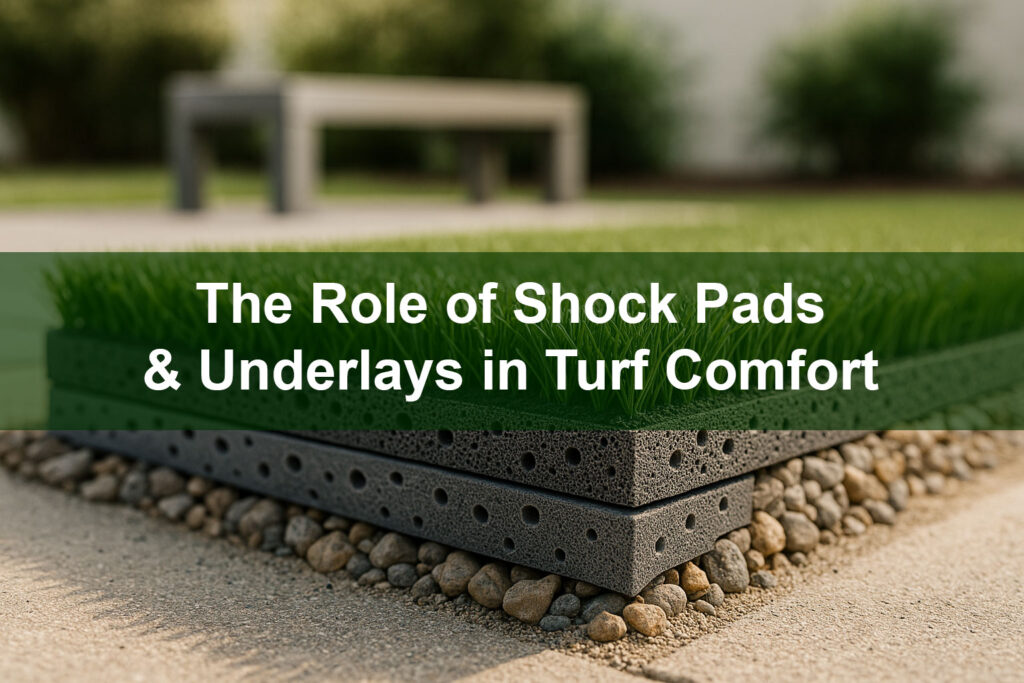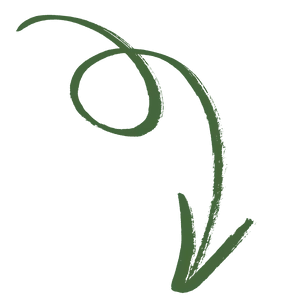Artificial Grass vs Rubber Mulch: Which Is Better for Play Areas?
Choosing the right ground cover for play areas is crucial for safety, comfort, and long-term maintenance. Artificial grass and rubber mulch are two of the most popular options—each with unique advantages and drawbacks. In this guide, we’ll compare them across eight key factors so you can decide which surface best suits your yard, playground, or backyard play space.
What You’ll Learn in This Guide:
-
Safety & impact attenuation
-
Comfort and playability
-
Maintenance requirements
-
Installation considerations
-
Cost comparison
-
Durability & lifespan
-
Drainage and weather performance
-
Environmental impacts
1. Safety & Impact Attenuation
Artificial Grass:
-
When paired with the proper under‐pad, turf systems can meet ASTM F1292 fall‐height requirements up to 10+ feet.
-
A uniform cushion of infill (silica sand or rubber crumb) stabilizes fibers and absorbs impact.
-
No loose pieces mean fewer tripping hazards.
Rubber Mulch:
-
Excellent shock absorption, frequently rated for falls up to 8–12 feet when installed at the correct depth (6–12 inches).
-
Loose rubber nuggets conform underfoot and dissipate energy.
-
Requires regular raking to maintain consistent depth and performance.
Winner for Safety: Rubber mulch has a slight edge on raw impact absorption, but turf + underlay can equalize performance with a thinner profile.
2. Comfort & Playability
Artificial Grass:
-
Even, cushioned surface ideal for running, tumbling, and ball play.
-
Never shifts underfoot—perfect for tricycles, scooters, and small toys.
-
No abrasion from loose bits when kids fall.
Rubber Mulch:
-
Soft surface but uneven; loose nuggets can make running or riding wheels more challenging.
-
Some sharp shards may appear over time if the mulch isn’t high‐quality.
-
Not suitable for wheeled toys or ball sports.
Winner for Comfort: Artificial grass offers a stable, pleasant surface for a wider range of activities.
3. Maintenance Requirements
Artificial Grass:
-
Weekly debris removal with a leaf blower or plastic rake.
-
Quarterly rinsing and annual brushing to lift fibers.
-
Rare seam or edge repairs.
Rubber Mulch:
-
Monthly raking to redistribute and top up depth.
-
Occasional topping up (1–2 inches) as granules break down or wash away.
-
Can trap leaves and mold if not regularly cleaned.
Winner for Maintenance: Artificial grass demands far less ongoing upkeep.
4. Installation Considerations
Artificial Grass:
-
Requires base prep: 3–4 inches of compacted aggregate plus optional shock pad.
-
Precise cutting, seaming, and adhesive work.
-
Professional installation yields the best, longest-lasting results.
Rubber Mulch:
-
Minimal prep: level and weed-barrier the area, then spread mulch to depth.
-
DIY-friendly—no seasonal adhesives or base compaction needed.
-
Easy to reshade or refill.
Winner for Ease of Install: Rubber mulch is simpler and faster to install in small play zones.
5. Cost Comparison
Artificial Grass:
-
Installed cost: $8–$15 per sq ft (varies by quality, underlay, and labor).
-
Amortized over 15–20 years, maintenance costs are low.
Rubber Mulch:
-
Installed cost: $3–$6 per sq ft for a 6-inch depth.
-
Replacement infill every 2–3 years (adds to lifetime cost).
Winner for Upfront Cost: Rubber mulch is more budget-friendly initially.
Winner for Lifetime Value: Artificial grass typically wins over a 10–15-year horizon.
6. Durability & Lifespan
Artificial Grass:
-
15–20 years of vibrant color under proper installation and care.
-
UV-stabilized fibers resist fading; backing resists breakdown.
Rubber Mulch:
-
4–6 years before granules degrade or compact significantly.
-
UV exposure and foot traffic accelerate breakdown.
Winner for Longevity: Artificial grass delivers a decade-plus lifespan compared to mulch’s half-decade.
7. Drainage & Weather Performance
Artificial Grass:
-
Perforated backing and a permeable base ensure rapid runoff.
-
Turf doesn’t wash away—excellent for sloped sites.
Rubber Mulch:
-
Very free-draining, but heavy rain can displace granules and cause washouts.
-
Requires edging to contain loose mulch on slopes.
Winner for Weather Resistance: Artificial grass stays in place and drains consistently.
8. Environmental Impacts
Artificial Grass:
-
Saves thousands of gallons of water annually.
-
Made from petroleum‐based plastics—consider recyclable options.
-
No pesticides or fertilizers needed.
Rubber Mulch:
-
Produced from recycled tires—diverts waste from landfills.
-
Can off‐gas VOCs in hot weather.
-
May contain trace heavy metals (choose certified options).
Winner for Eco-Friendliness: Tied—grass conserves water, mulch upcycles tires. The best choice depends on local priorities.
Conclusion & Recommendation
-
For active play, ball games, and low-maintenance convenience, Artificial Grass is the superior choice.
-
For a tight budget or simple DIY install, Rubber Mulch provides excellent padding at lower upfront cost—though with more frequent refreshes.
Still undecided? Contact our experts for a free site evaluation and product samples to test softness, color, and performance before committing.
Ready to choose? Explore Play Area Turf or Shop Rubber Mulch Options







